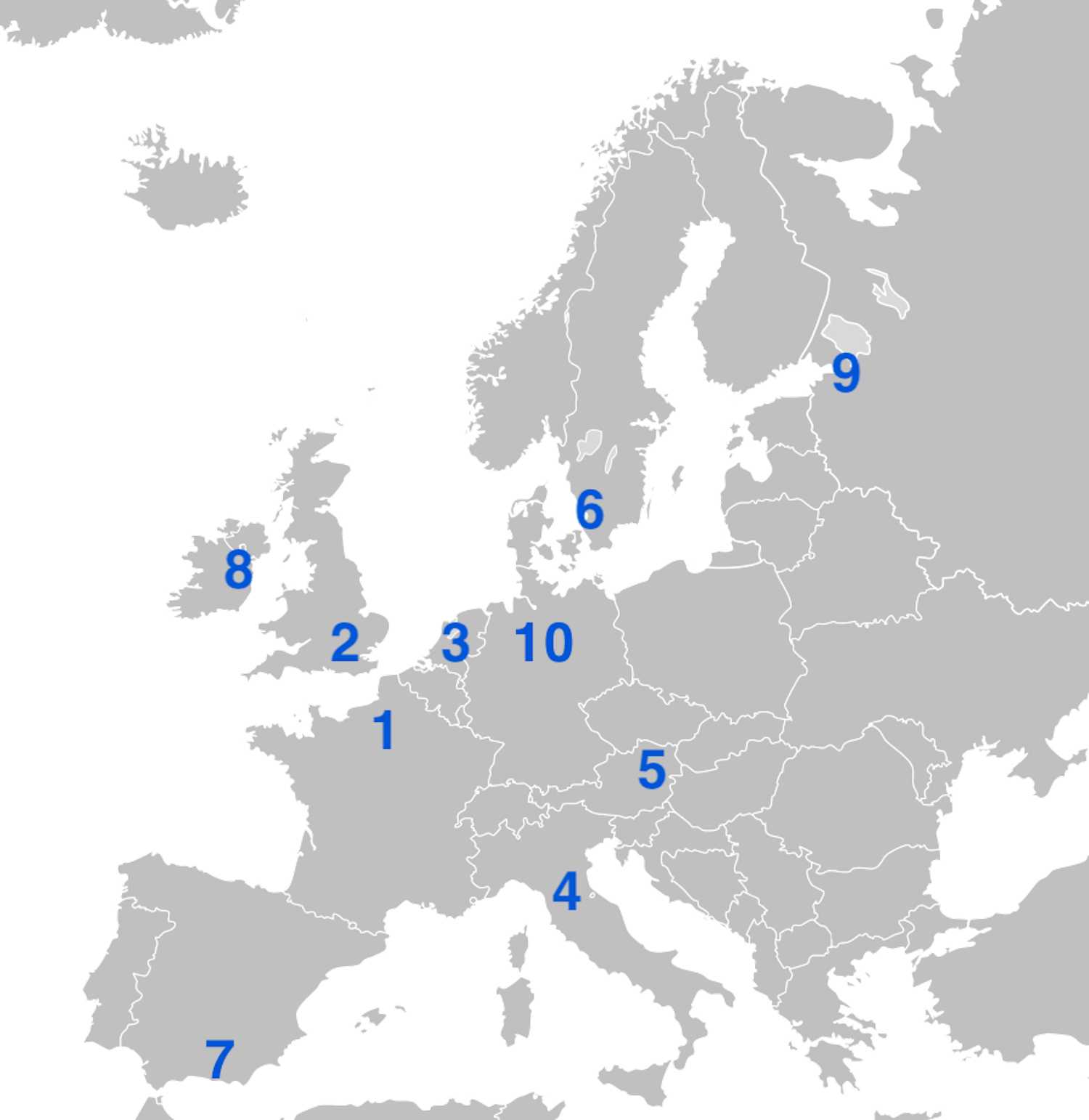
Europe in Bloom Trivia Quiz
Here are ten of the most stunning gardens in Europe. Can you find them on a map?
A label quiz
by wellenbrecher.
Estimated time: 3 mins.
- Home
- »
- Quizzes
- »
- World Trivia
- »
- World Sites
- »
- Gardens


| 1. |
| 2. |
| 3. |
| 4. |
| 5. |
| 6. |
| 7. |
| 8. |
| 9. |
| 10. |